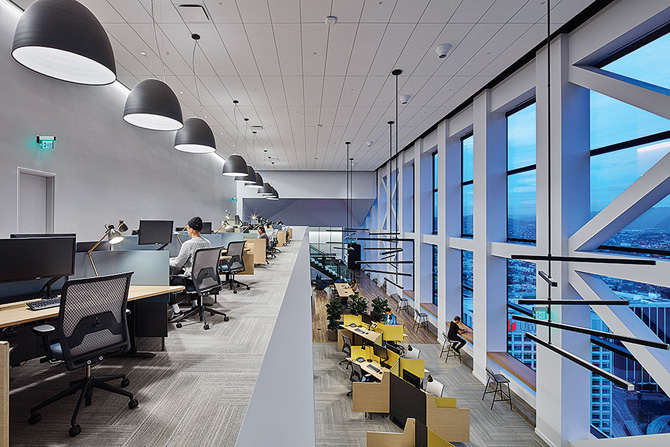“Co-designing” a workspace signifies a close collaboration between a client (and others, like an architect) and an industrial designer, to create a space that fits the client’s vision, represents their brand and embodies their culture. To be successful, a co-design project requires a client who wants to be actively engaged and a contributor to the process.
For those who are excited about being on the team as well as those with ideas about what they’re looking for yet open to collaboration, the co-design process typical starts with the designer asking questions to discover client’s vision, brand, culture, short-term and long-term needs, planned use of the space, practical requirements, and so forth.
WHY HAS CO-DESIGN TAKEN OFF?
There are several drivers behind this trend and why it can be so effective in developing innovative workspaces.
TECHNOLOGY
The worlds of information and manufacturing have seen dramatic change due to advances in technology for efficiency and logistics. Moreover, as consumers, we have increased access to products made specifically for us as individuals. The expectation of a customized experience is powerful and becoming ever more pervasive.
DO IT YOURSELF
There is an ongoing DIY movement reflecting a desire for involvement in the design process as portrayed in all forms of media including television, YouTube, the Internet and magazines. This exposure has filtered into the commercial sector with a desire on the part of clients to engage and be part of the process of creating innovative office workspaces as well.
EDUCATED BUYERS
In the “old” days before the Internet, an average client relied on a commercial interiors provider to select the finishes from a set of samples and create a design. That restriction is now out the window, with thousands of options for finding what you love and makes your project unique.
IS THE CO-DESIGN APPROACH WIDESPREAD?
Driven by these three factors, workspace co-design is a movement happening throughout the United State and around the world. If we peruse any design-oriented magazine, we’ll see spaces that have been designed in partnership with the user. It’s human nature to want to express who we are as individuals as well as what our organization represents in terms of brand and culture. Access to information and new technologies has made it possible for the average person anywhere to collaborate and be part of that exciting process.
The trend to co-design has forever changed the office environment. Clients and designers have the ability to push design further to come up with a distinctive solution. Plus, there can be less project risk if the client is part of the team and a co-creator. Offices are less generic, more curated and tailored these days because of this process. When a client is engaged, every aspect of the project can become unique and specific to who they are.
WHAT ARE SOME BEST PRACTICES?
At Tangram, we have excelled at the co-design process because we see a project as not just selling a product. We don’t bring out a catalog of items to select from and hope the client likes one. What we have developed over time is a well-honed process that in the end creates beautifully furnished and highly functional workspaces for people. Starting from scratch on every project ensures that critical input from both client and designer comes together to deliver a successful outcome.
About seven years ago, we did a study of our clients to identify who they are, what markets they’re in, size offices, locations, etc. The common thread was that every project had someone from the client and design firm who wanted to create something special and be part of the process. That approach holds true today and has resulted in some extraordinary workspace environments.
Charlotte Wiederholt is Creative Director of Tangram Studio. For more information, visit tangraminteriors.com or call (562) 365-5000.

